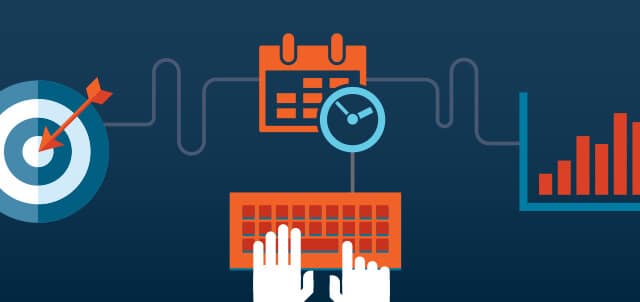Time and attendance automation can be a beautiful thing. It can cut down on errors from manual employee time tracking and processing and the time it takes to reconcile your payroll.
But, don’t stop there.
It also can help your human resources strategy and improve your bottom line. When you manage your employees’ time efficiently, your business can run more effectively. Staffing, productivity and compliance all become clear.
An office scenario
Let’s take a look at Dr. Shaw, whose busy medical practice employs 25 people. Keeping track of everyone’s hours is a time-consuming chore for her office manager, Brian. Spending time deciphering chicken-scratch timecards whose hours don’t add up is not the best use of his time. And, Dr. Shaw noticed an increase in how much time they’re all working – especially Diane, a nurse who has been with her from the beginning.
Can Dr. Shaw afford to hire someone? How can a time and attendance report make a difference?
Staffing and scheduling
Beyond helping with payroll, a time and attendance system can give detailed reports about what your staff is up to:
- Hours worked
- Overtime worked
- Missed punches on the time clock in real time
- Shifts not covered during peak times
- Who has taken or is owed paid time off
- Ensuring all departments are adequately covered at any given time
An overtime report can help determine whether paying an employee to work additional hours is more cost-effective than the expense of hiring, training and paying a new employee. Will the relief you get from an additional employee be enough to warrant the extra expense? Or, how can you allocate your staff differently to alleviate the overtime?
Overtime issues also can affect employee morale. Does one person feel he is carrying the brunt of the workload? Is he suffering from burnout? Is there something that you can do to adjust schedules to even-out the workload? Do they need some time off?
Think about what it would be like to have your finger on the pulse of your talent and an idea of what their workload balance is; and by staying ahead of the burnout curve, you can and help retain them.
This brings us back to Diane, who has put in a lot of hours lately and is ready for a vacation. But can she take one? Time and attendance software lets everyone see what days are available for vacation and whether they have accrued the paid time off. Diane doesn’t have to wait until she is at work to ask Brian about it; she can check online to review her available time off while she plans her vacation from home.
When employees are empowered to have access to their own information through a self-service portal, it builds morale. They feel more a part of the company, and they are more active participants. Now, you have strategic workforce planning.
Productivity and savings
A lot of time and effort goes into filling out, managing and approving manual time cards. An automated system can cut back on the time and errors. When you are able to see a snapshot of where, when and how long your employees are working, it has the potential to increase productivity on several levels:
- Getting a handle on overtime helps ensure everyone is working appropriate hours
- A staff that isn’t over-tired will be more productive
- A staff that knows their hours are being tracked efficiently may be more productive because they actually are working more hours
- Giving employees a self-service portal where they are in control of their basic data
- With real-time punch in and punch out, staff isn’t left to “guess” or “fudge” their timesheets
- Money is saved when there can be no manipulation of the system such as logging time that was not worked
- A missed punch-in or punch-out can be determined the day it happens, allowing the manager and employee to handle it efficiently
- A more accurate system ensures there is less overpayment made due to errors
- Automation decreases the amount of human resources used to get payroll done each pay period – saving on time and cost by redirecting those resources to other goals and tasks
So, back at the doctor’s office, with Brian’s timecard and payroll processing duties pared down to just minutes each pay period, he is free to work on bigger-picture items such as cross-training employees and building a client list, helping Dr. Shaw grow the business.
Compliance
Health care reform has put a finer point on employee time tracking. The new law requires that businesses report the number of full-time and full-time equivalent employees that they have. An automated system will help define who is working hours that fall into those categories and help keep you compliant with regulations.
Keeping track of time and overtime worked for hourly employees is imperative, but some states also require that documentation be kept for even salaried employees. A time and attendance system will help keep this information available and accessible for these agencies.
Employers can cut checks from the data that a time and attendance system has collected and have it be accurate, making tax reporting at the end of the year easier. You know your numbers are right and don’t have to spend as much time verifying information. And, if there’s ever an audit, Brian at Dr. Shaw’s office is confident that the information he is providing about the employees is well-organized and accurate.
A time and attendance system benefits your human resources system by holding people accountable for the hours they are working. It makes employee time tracking fair across the board and gives you a clear view into when, how and where your staff is working.
To learn more about how you can automate your time and attendance processes and more, read our complimentary e-book Derailed by data? The Insperity guide to HR technology.


